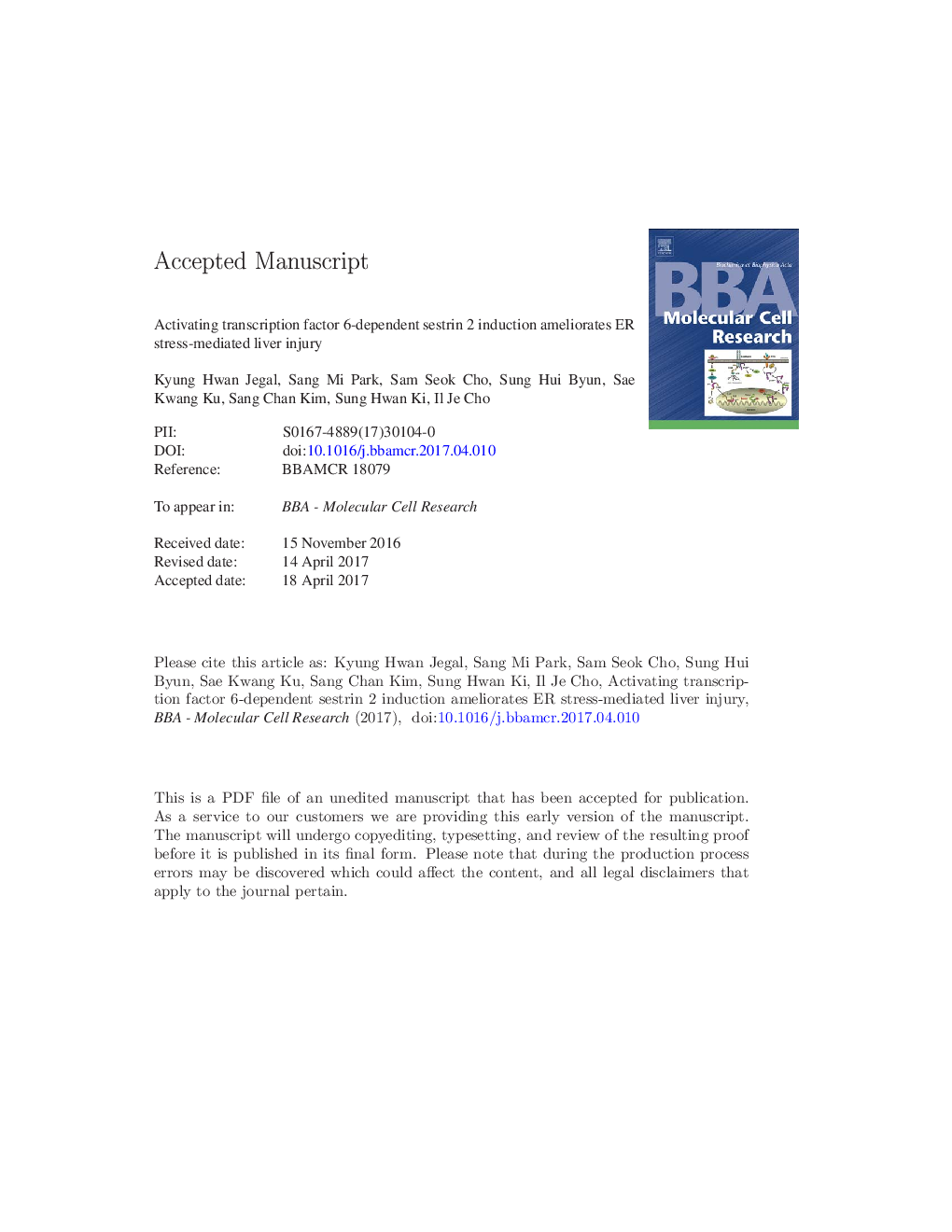| Article ID | Journal | Published Year | Pages | File Type |
|---|---|---|---|---|
| 5508634 | Biochimica et Biophysica Acta (BBA) - Molecular Cell Research | 2017 | 39 Pages |
Abstract
Endoplasmic reticulum (ER) stress is characterized by an accumulation of misfolded proteins, and ER stress reduction is essential for maintaining tissue homeostasis. However, the molecular mechanisms that protect cells from ER stress are not completely understood. The present study investigated the role of sestrin 2 (SESN2) on ER stress and sought to elucidate the mechanism responsible for the hepatoprotective effect of SESN2 in vitro and in vivo. Treatment with tunicamycin (Tm) increased SESN2 protein and mRNA levels and reporter gene activity. Activating transcription factor 6 (ATF6) bound to unfolded protein response elements of SESN2 promoter, transactivated SESN2, and increased SESN2 protein expression. In addition, dominant negative mutant of ATF6α and siRNA against ATF6α blocked the ER stress-mediated SESN2 induction, whereas chemical inhibition of PERK or IRE1 did not affect SESN2 induction by Tm. Ectopic expression of SESN2 in HepG2 cells inhibited CHOP and GRP78 expressions by Tm. Moreover, SESN2 decreased the phosphorylations of JNK and p38 and PARP cleavage, and blocked the cytotoxic effect of excessive ER stress. In a Tm-induced liver injury model, adenoviral delivery of SESN2 in mice decreased serum ALT, AST and LDH activities and the mRNA levels of CHOP and GRP78 in hepatic tissues. Moreover, SESN2 reduced numbers of degenerating hepatocytes, and inhibited caspase 3 and PARP cleavages. These results suggest ATF6 is essential for ER stress-mediated SESN2 induction, and that SESN2 acts as a feedback regulator to protect liver from excess ER stress.
Keywords
UPREThapsigarginATF6IRE1mTORPARPALTtunicamycinUPRspliced X-box binding protein 1SESNFBSp38JnkDMEMsXBP13-(4,5-dimethylthiazol-2-yl)-2,5-diphenyl-tetrazolium bromideC/EBP homologous proteinc-Jun N-terminal kinaseDMSODulbecco's modified Eagle's mediumMTTROSAdenovirusASTAspartate aminotransferaseAlanine aminotransferaseinositol-requiring enzyme 1Endoplasmic reticulum (ER) stresschromatin immunoprecipitationCHOPSestrinDimethyl sulfoxidefetal bovine serumendoplasmic reticulumdominant negativeactivating transcription factor 6lactate dehydrogenaseLDHmammalian target of rapamycinUnfolded protein responseprotein kinase RNA-like endoplasmic reticulum kinasep38 mitogen-activated protein kinasePERKPoly(ADP-ribose) polymeraseCHiPReactive oxygen species
Related Topics
Life Sciences
Biochemistry, Genetics and Molecular Biology
Biochemistry
Authors
Kyung Hwan Jegal, Sang Mi Park, Sam Seok Cho, Sung Hui Byun, Sae Kwang Ku, Sang Chan Kim, Sung Hwan Ki, Il Je Cho,
